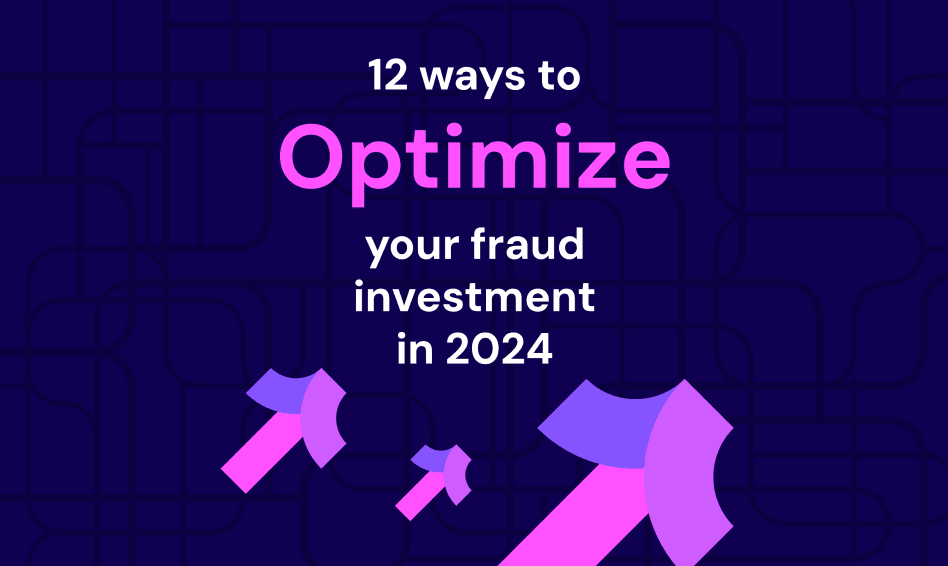Optimizing Your Fraud Investment in 2024
- Blog

- Ariella Rothschild
In an increasingly digital world where online risks can make or break a business, organizations understand the need for effective fraud prevention strategies. With tighter budgets and ever-evolving threats, this understanding is even more apparent, and companies are emphasizing optimizing their fraud measures. Maximizing resources and actions is no longer a luxury but essential to business success.
In this blog post, we discuss the increasing rates of fraud that businesses face and provide strategies for optimizing fraud prevention to tackle these new challenges.
The Increase in Fraud
The frequency and sophistication of online fraud have skyrocketed in recent years, and Generative AI is only exacerbating the problem. Cybercriminals continuously find new ways to exploit vulnerabilities in digital systems, and GenAI offers more and better tools to deceive businesses and users alike. Attacks are increasing, from identity theft and account takeovers to phishing scams and friendly fraud.
Organizations must be proactive in their approach to fraud prevention to protect their customers, reputation, and bottom line.
Prioritizing Fraud Prevention Optimization
As fraud increases, the market continues to change, creating an even more challenging environment. Companies must approach this challenge by improving their efficiency and effectiveness in fighting fraud. Optimization is key. This involves fine-tuning current fraud prevention measures and ensuring each piece is maximized and fits seamlessly together.
Ahead of 2024, we compiled an eBook of 12 ways to optimize your fraud investment to help you meet your goals in the new year. Here are three to get you started:
1. Periodically analyze strategies and results
Evaluating fraud prevention measures periodically is essential to make sure they’re working as intended and to their best capacity. Set aside a recurring, uninterrupted time every week or month, depending on the scope of your operation. Take a look at both the successful and unsuccessful cases of fraud to analyze what’s working and what’s not to help you continuously improve your measures.
2. Regularly train employees
Make the company aware of risks and best practices to ensure that they are alert at every level instead of working in silos. With training, they can identify potential red flags and fraud indicators and understand the significance of reporting suspicions promptly. To maximize the effectiveness of fraud awareness, tailor sessions to suit different departments, job roles, and levels of responsibility within the organization. Human resources can be a great partner in this initiative.
3. Identify where to improve processes and automate
When evaluating tools and resources, ask yourself where you can increase efficiency and automate processes. Analyze the criteria used and identify patterns in the types of transactions that frequently require manual intervention. By evaluating the average time spent on manual reviews per case, you can identify bottlenecks and highlight improvement areas, ultimately helping reduce delays and increase productivity.
Want to learn more?
Discover more tips to maximize your fraud investment and protect your business. With our latest eBook, you’ll learn to optimize, tighten, and maximize your defenses.
Download now
Identiq Spotlight

2024 trends
Quantum threats to encryption, advanced AI attacks, supply chain security focus, decentralized identity rise, and ransomware …
May 4, 2024

Marketing and fraud collaboration
Quantum threats to encryption, advanced AI attacks, supply chain security focus, decentralized identity rise, and ransomware …
May 4, 2024

